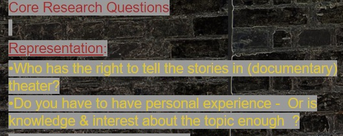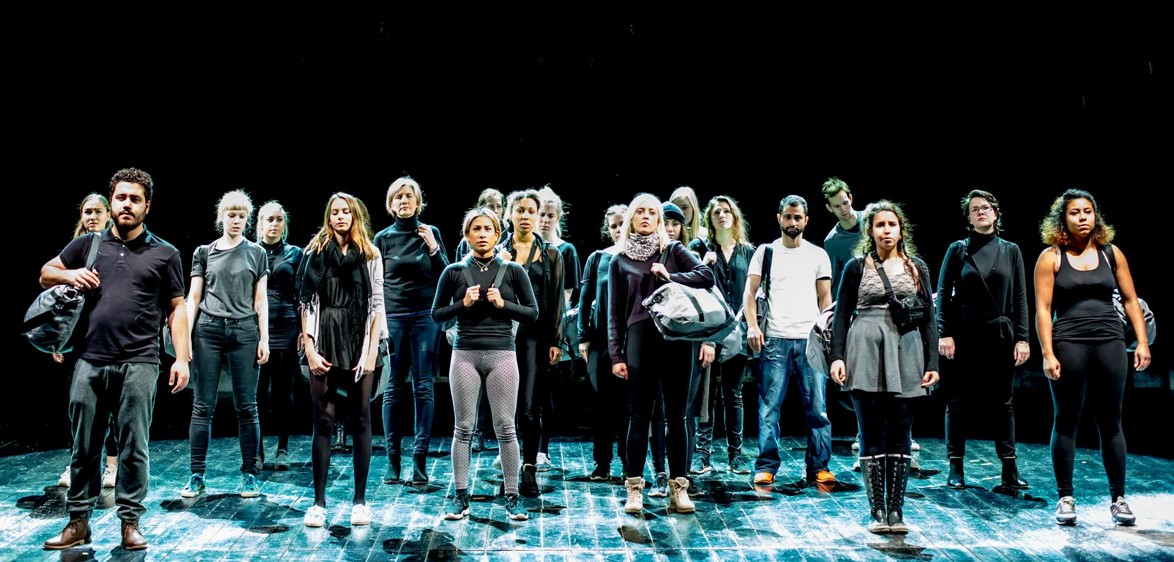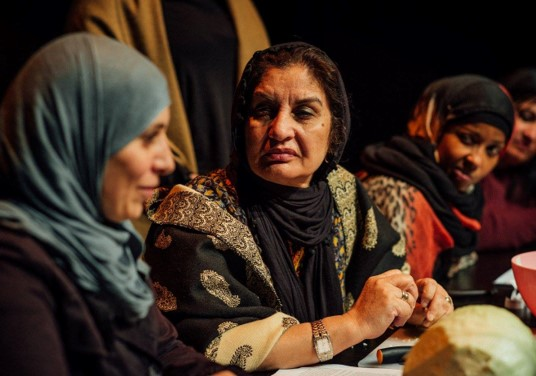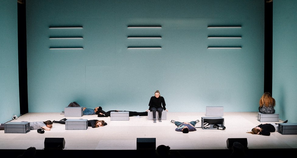Divorce stories:
I have also done one a play about divorce stories, The development of the stories is a movement from a C.V. like narrative ‘I went to this school and moved to Denmark. I did this and then I fell in love and I fell out of love’. And then I try to get them to find one point where they really feelt some defining moments. Moments wich was a transformative period in their lives. And then thy move to broaden this point. I may ask them to use their senses to describe this moment: ‘What was the colour of the room? How did it smell? How did it sound?’ Through using senses in the description you are actually on the way to making a piece of art, because you describe something that other people relate to at another level than through the brain.
The notion about relating to art through senses is perhaps one of the biggest quests in my artistic life. When they broaden their stories, we try to find different formats. They can be movements. They can be visual. They can be poetry, songs, rap, dialogue, monologue, and then at the end we mix them together often through the embedded dramaturgy in the topico like for example: I was a happy child. I thought that there was something wrong with my parents. They told me that they were going to get a divorce. I had a horrible time. Now I am looking back at it, and it is how my life is. This is dramaturgy in itself, and often I organise these stories by using the embedded dramaturgy.
Background
The practice this project arise from is documentary theatre, mainly at the Edison Theatre, Copenhagen produced by C:NTACT which is a socioeconomic platform where young people’s voices are heard through different topics. I work with these people for maybe three months. We meet a couple of evenings during the week, we develop personal stories and I stage them.
Hooyo! - Our mothers and their children:
Gender and Sexuality:
This is photo from one of the plays I have done. Usually there is about between 12 and 22 participants. And they all have experience and something they want to share about this theme. It is often a very long process from the group of people who join the project to begin with, to the final performers, who are on stage at the end, maybe only three of those where there to begin with, and maybe the last one just joined the day of the premiere. So you have to have a lot of flexibility, putting in and removing stories.





